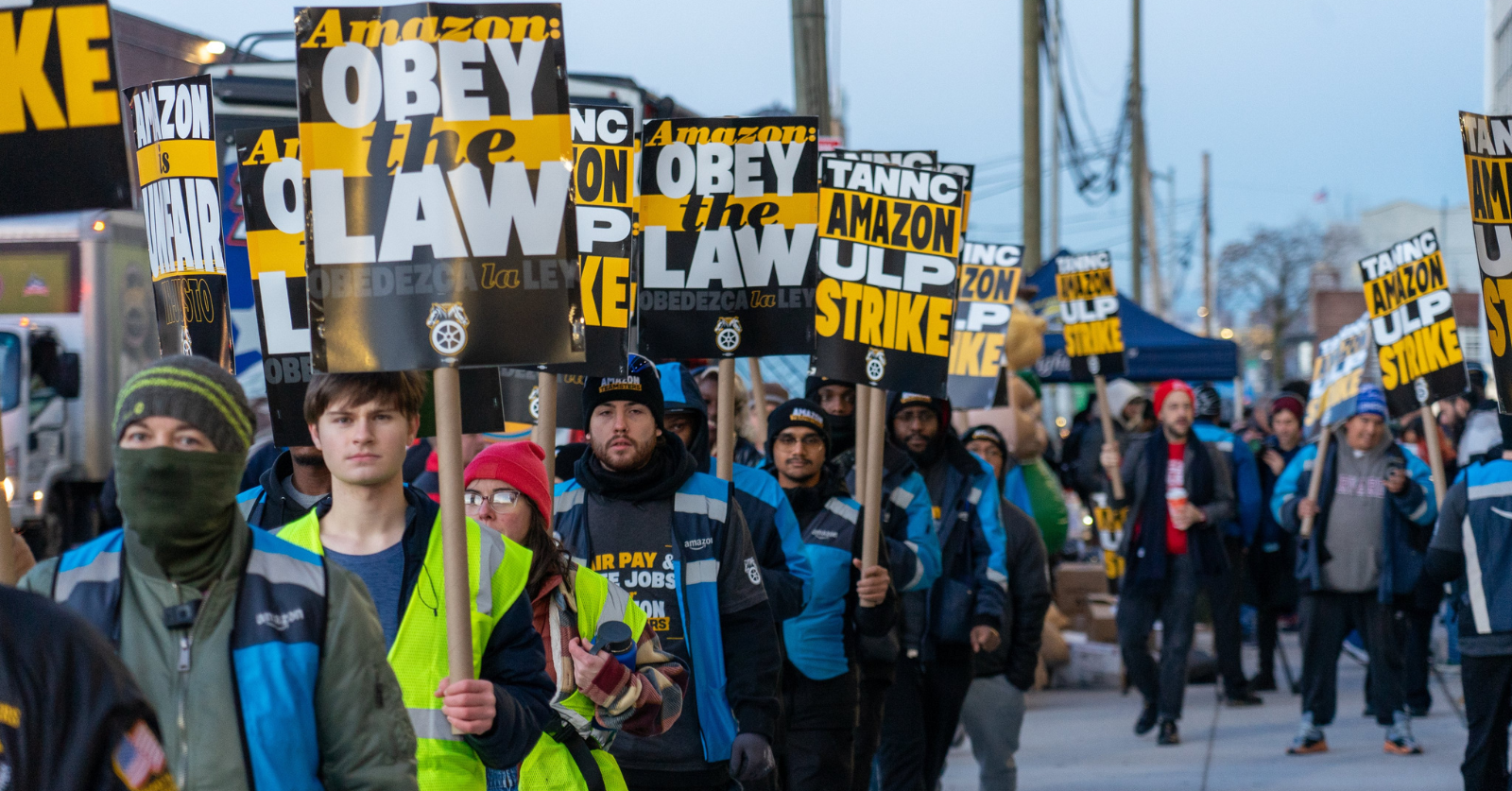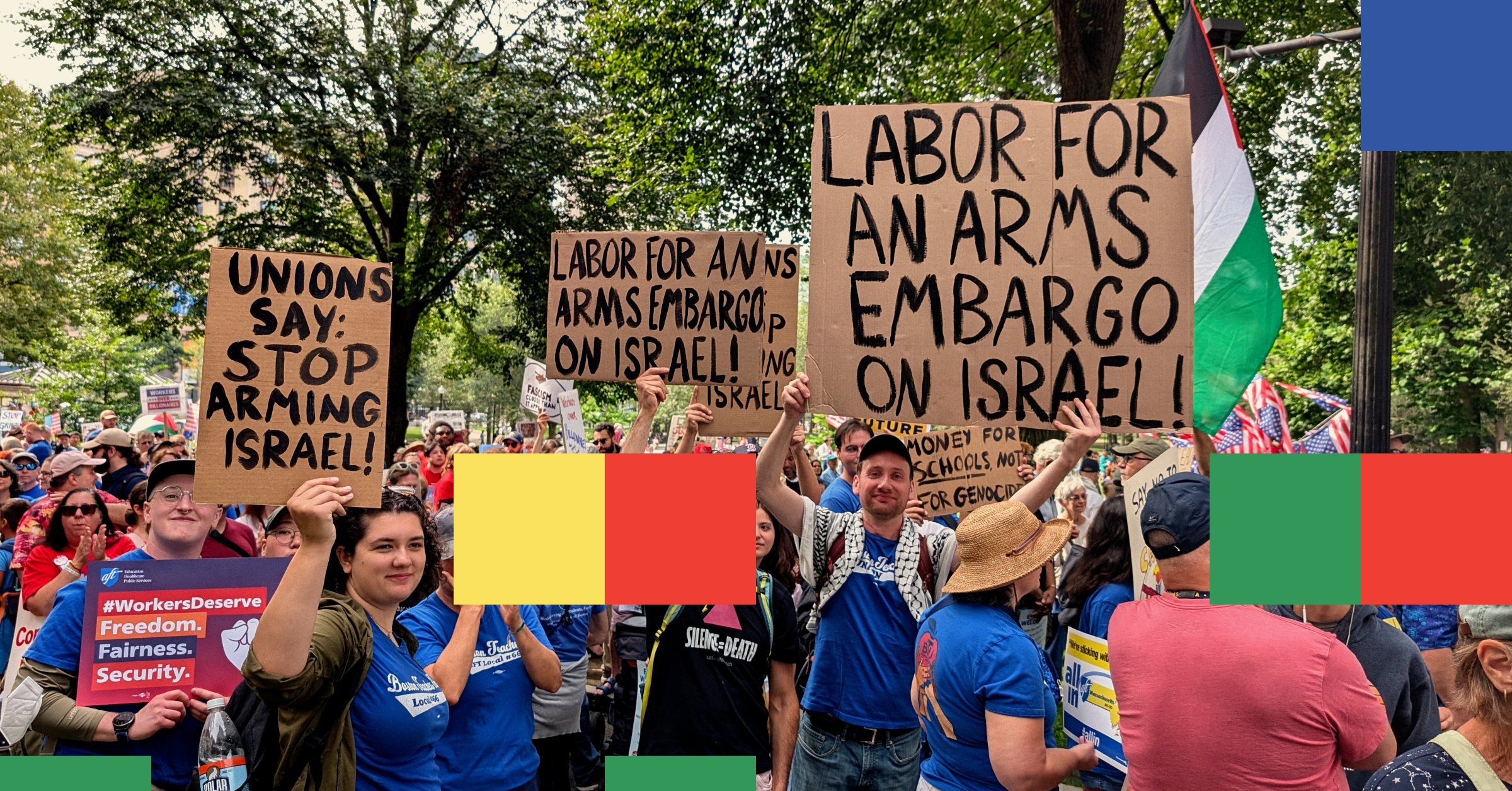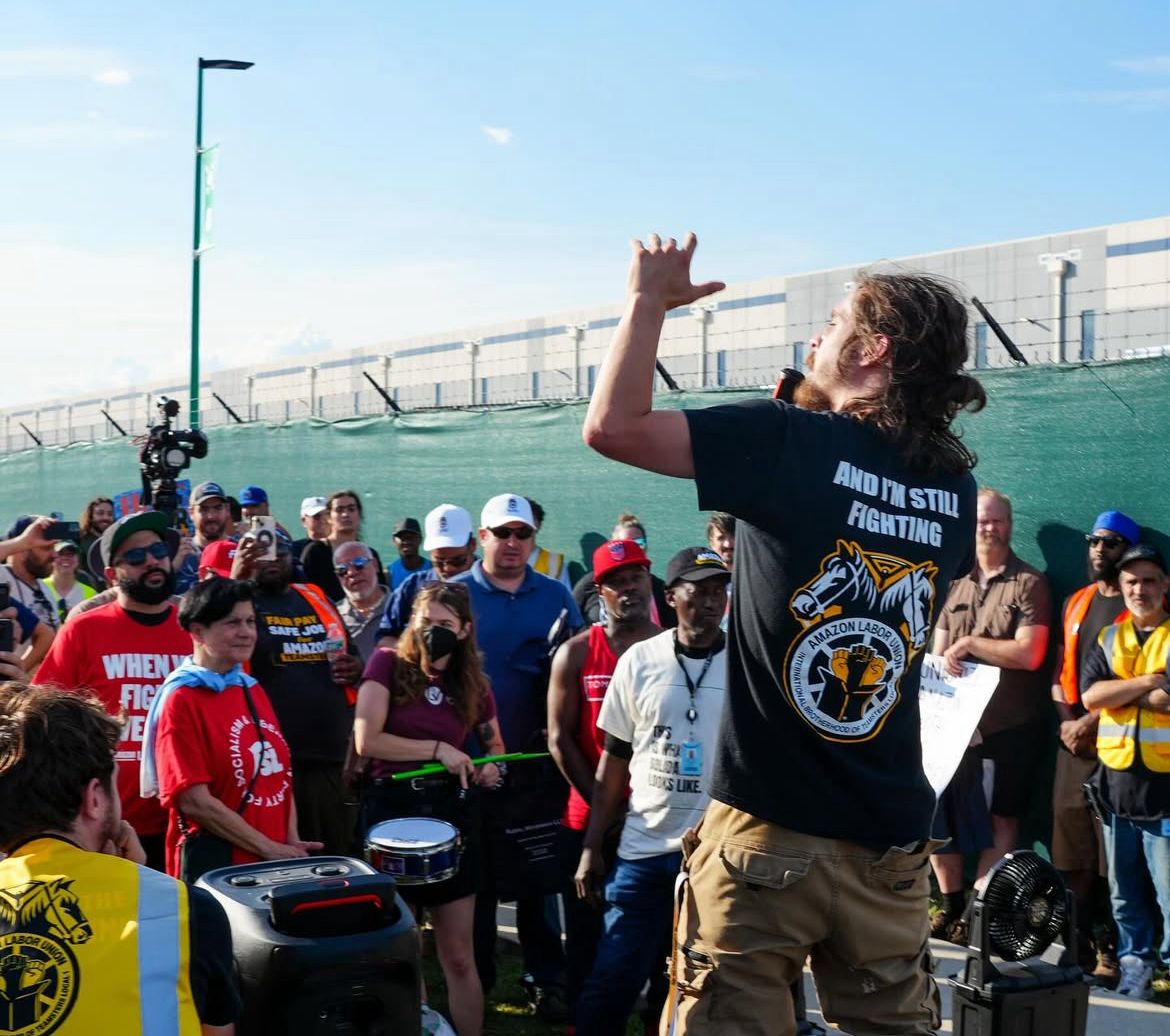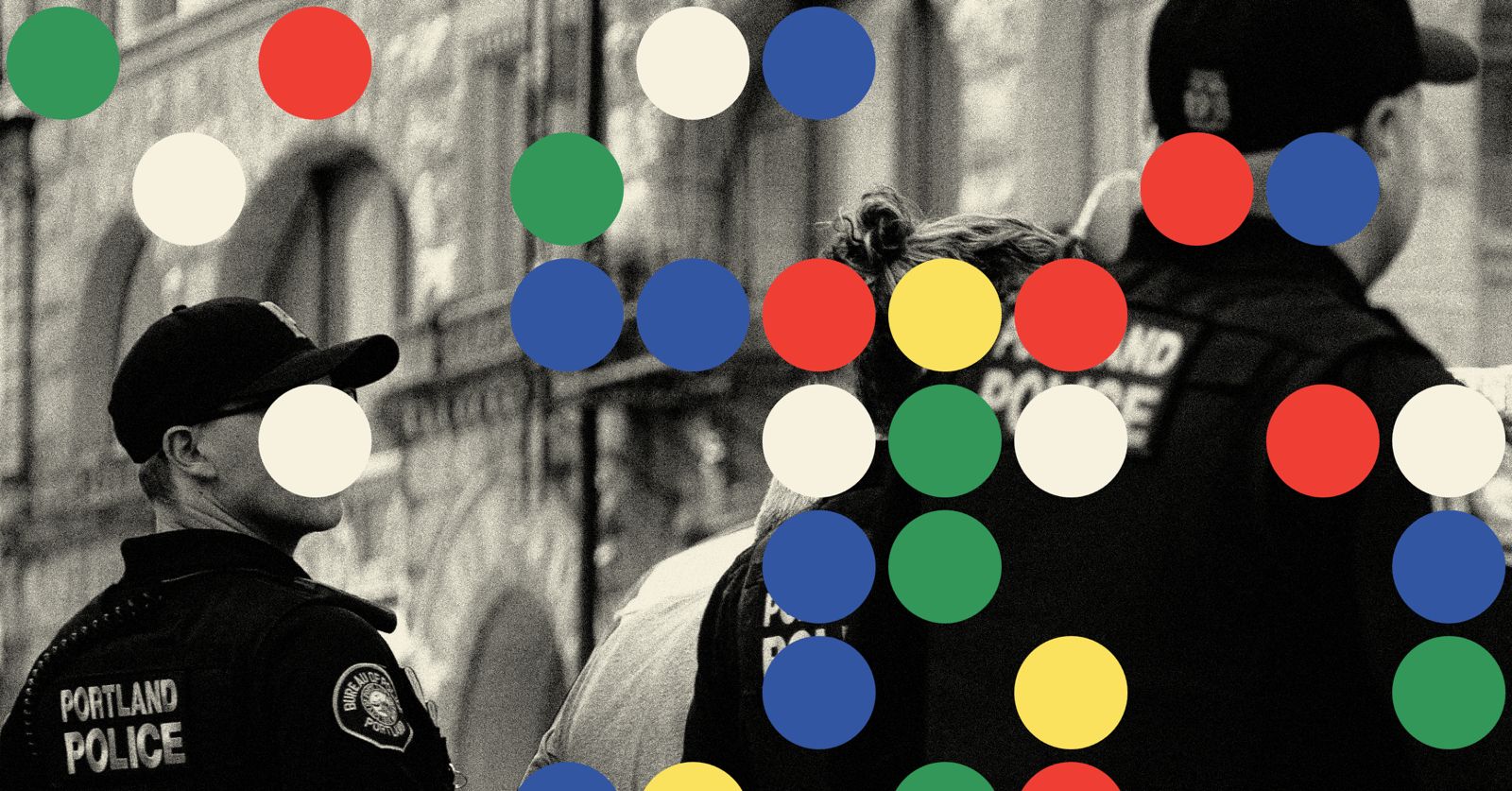In December the Teamsters launched the largest strike yet against Amazon across multiple states. At DBK4 in Queens, we had one of the strongest showings of worker participation due to groundwork laid by years of organizing. DBK4 is a station: a relatively small warehouse that facilitates the last mile of the delivery process. Workers on the inside sort the packages into routes for the delivery drivers. We were the only facility where warehouse workers and drivers struck simultaneously, with the participation of over 200 drivers. I’ve been working as a delivery driver at the warehouse since it opened in 2022, and I got the job with the intention of organizing, first independently as Amazonians United, and the past year with the backing of the Teamsters.
Launching Our Union
We launched our drive to get workers to sign union cards in the beginning of September 2024. After nine months of building support underground, our organizing committee then acted quickly to ensure we could make our move before management knew anything. We worked around the clock, arranging meetups at coworkers’ homes, the bodega nearby, the laundromat, their second jobs. Drivers held their newborns in one arm and signed a union card with the other.
Whichever committee member was at work would talk to workers about the need for a union and then send a Teamsters staff organizer with one of their coworkers to meet them on break, on their routes, to sign up to join the union. This was possible only because of the months of work the committee did to develop supporters into leaders, who then developed relationships with their own network of supporters. With our majority in hand, we burst through the front gates and shook the building, chanting, “Everywhere we go, people want to know, who we are, so we tell them, we are the union, the mighty mighty union.” Since September, Amazon workers have followed suit, building majorities and demanding recognition in several states, but Amazon has refused to negotiate or even recognize any of us.
Organizing Toward a Strike
The strike at DBK4 was not a knockout blow to Amazon’s ability to deliver goods, but it was a huge step forward for our union. The strike was an unfair labor practice strike over Amazon’s refusal to recognize and begin contract negotiations with our union, despite our demonstration of majority support under labor law. At the same time, we knew this strike alone would not bring Amazon to the table, given its staunch anti-union attitude. We hoped to use the strike to test our structure, inspire other Amazon workers by showing them how much the movement has grown, build workers’ confidence in striking, and develop contacts. The audience wasn’t just Amazon and the general public but also all the other Amazon drivers and airhub and warehouse workers around the country. Everyone living under Amazon’s dictatorship got to see their coworkers — people just like them — rise up.
In the weeks leading up to the strike, we organized openly in front of the warehouse. Union drivers arrived early before their shift to talk to coworkers as they came in to work. Teamster staff organizers and drivers who finished work early would talk to drivers as they left the building in the evening. This broke down some of the fear and made clear that the union was an organic movement of drivers, not an outside force. We used these tablings to prepare for the strike, but with a shifting focus week to week. First we disseminated information about our legal rights. Then we went on the offensive against Amazon’s union-busters — flown in to hold captive audience meetings — with flyers showing their faces, history of unfair labor practices, and pay rates. Then we surveyed drivers on the issues they cared about. In the couple weeks leading up to the strike we launched a strike pledge and began preparing drivers to strike.
As we increased the pressure, management’s retaliation rose. One of the union-busters, Juan Carlos Cervantes, who we had been exposing through the flyers, decided to try to provoke one of our strongest leaders, Emmanuel, with homophobic slurs. Despite the union buster’s instigating and aggression, Amazon actually suspended Emmanuel pending investigation and tried to dig up any excuse to fire him. The union committee held an emergency meeting and organized a march on the boss the following morning to demand Emmanuel’s reinstatement and the firing of the discriminatory union-buster. Emmanuel was returned to the job with no loss in pay, and the union-buster was fired. This showed more of our coworkers that when we stick together, we can protect each other — even from vicious union-busting.
What Did the Strike Accomplish?
The strike was the culmination of months of aboveground organizing which built upon the underground campaign, which built upon the previous organizing as Amazonians United, before we affiliated with the Teamsters. The strike saw leaders come into their own and supporters take leadership; it built out our base of support. On the first day of the strike, we had 47 drivers who came to work either uninformed of the strike or intending to cross — who instead decided to join us. By the end of the strike, over 200 drivers had participated, and the picket operated like a machine with different components playing different roles.
At the gate where workers came and left in their personal vehicles, we held a picket to ensure everyone entering was aware of the strike, with one captain keeping time and pausing the marchers every minute or so. Strikers would approach the cars as they waited to enter and pass them a flyer informing them of the strike and asking them to either join the strike or honor the picket and not cross.
At the main picket in front of the entrance where the commercial Amazon vans drove out, we had a captain as the point of contact for management and who paused the picket periodically to allow vans through. The first day, we were letting one van through every four minutes until the NYPD arrested our lead Teamster organizer and police linked arms to protect the flow of deliveries. Also vitally important, chant leaders had to be constantly rotated to keep the energy high and share the burden on our vocal cords. Food distribution had to be supervised. All of these roles needed to be filled 6am-midnight for five days of continuous picketing. That necessitated many supporters stepping up into these positions of leadership, deepening our union’s base.
Many workers who had been hesitant to sign a union card just a few months ago boldly defied management and police repression. My stomach tightened as the police threatened mass arrests with their Long Range Acoustic Device and zip ties. But we did not waver and neither did our supporters. Even after the arrests of a driver who attempted to join us and our lead Teamster organizer, Antonio Rosario, we maintained a positive spirit, with drivers taking turns freestyle rapping on the loudspeaker, taunting, “Amazon, we right here. We ain’t going anywhere, we right here.” This chorus became an anthem, as different workers stepped up to spit verses about the indignities they faced and overcame to be here.
In our organizing conversations while we built the union, we would always ask, what would it take for Amazon to grant us the changes you’d like to see? Most would point to our first minority strike of warehouse workers the previous year and say, “We need to do that but bigger.” Now, that seed has been planted in the heads of Amazon workers who saw our strike across the country. But for that seed to grow into a union, it must be developed through organizing.
Support from DSA
DSA support was one of the highlights of the strike at DBK4. DSA organized their elected officials to join the picket and provided material support including handwarmers, soup, coffee, and solidarity gift bags, even a delicious and culturally astute pernil, beans, and rice lunch. Most importantly, DSA’s Labor Working Group organized a robust strike support program, chartering three buses to the JFK8 warehouse on Staten Island and an online picket shift volunteer program for JFK8 and DBK4 that hundreds of DSA members and non-DSA supporters were organized through.
On top of arranging picket support, DSA quickly trained a cadre of auxiliary picket captains. They checked in DSA picketers and were responsible for communicating decisions being made by Teamster strike captains. They were also in charge of ensuring no DSA members were disruptive or diverting attention from the main points the strike was meant to communicate. We didn’t want DSA members hurling insults at picket line crossers or even police. We encouraged DSA members to wear DSA merch and be open about their membership in DSA. They should talk about how that relates to their joining the picket line, but they shouldn’t preach or try to recruit workers into DSA.
It moved the drivers to see how many members of the community were present. Many other union members were organized through DSA, showing up with clothes or signs representing their union. DSA made a positive impression not only on the rank and file but on the union leadership, which is accustomed to having to overcome the disorganizing and frankly weird antics of the range of lefty groups that show up at these types of events and try to push their own narratives and newspapers.
Salting and Organic Leaders
The years of groundwork laid by salts enabled the success of the Teamsters campaign at DBK4, but it would not have gone anywhere without the institutional backing of the union in the form of staff organizers. These staffers were recruited out of the UPS rank and file to support Amazon organizing. And the Teamsters would not have chosen to take on Amazon if members had not elected new reform leaders in 2021. But ultimately the organic leaders out of both UPS and Amazon played the decisive role. These rank-and-file leaders didn’t get their jobs to change the world or engage in class struggle, they got their jobs to pay bills and survive. But over decades at UPS and the last year of this campaign at Amazon, they learned the importance of our union, they learned how to organize, and they brought their personal experiences to the organizing.
As the labor movement pushes forward into the uncertain future, our only hope is regular people taking the movement into our hands on the shop floor. And one of the best ways socialists can help catalyze the development of such rank-and-file leadership is by getting strategic jobs to organize. If we’re going to fan the sparks of the labor action we’re seeing now into a blaze that can grow the whole union movement once again, we will need hundreds more socialists joining us on the shop floor. Join us!




